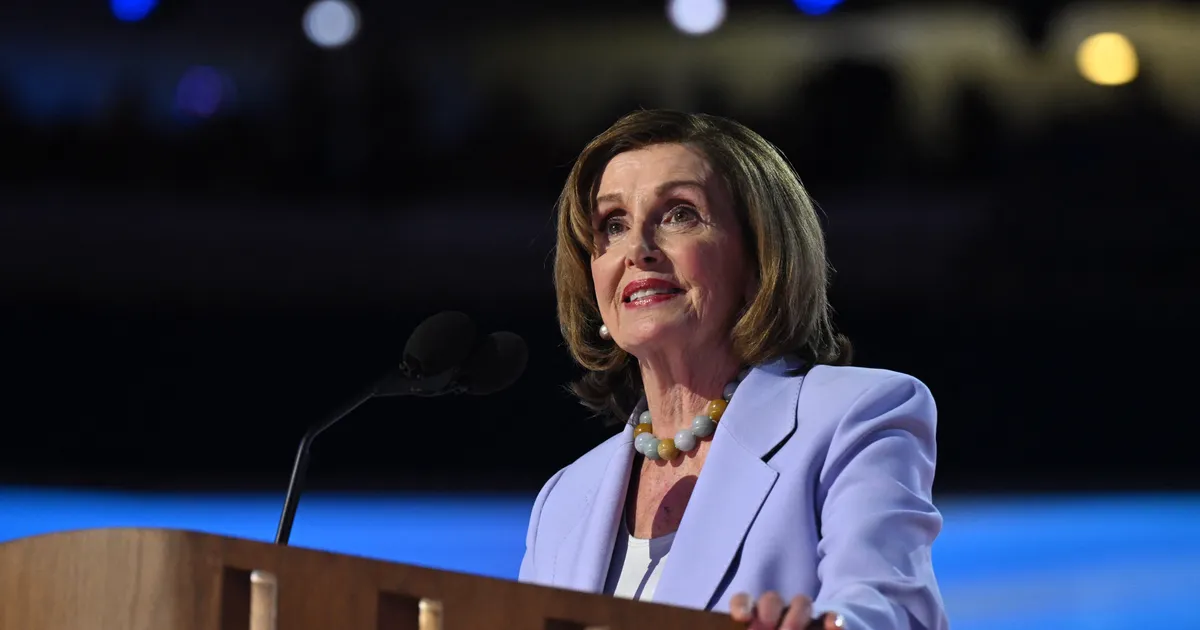Copyright New York Magazine

For much of the 21st century, people disparaging the Democratic Party, and particularly its moderate or Establishment wing, have accused it of lacking courage or spine. No one said that, however, about one of the party’s enduring pillars of strength, longtime House leader and sometime Speaker Nancy Pelosi, who just announced she would retire from Congress at the end of her current term. Some Democrats and most Republicans thought Pelosi was wrong from time to time during her 39 years in the House, 20 of them as leader of her party’s caucus. But nobody doubted her resolution, her vote-counting skills, her sheer political chops, and — most of all — her toughness in tight spots. Her gradual relinquishment of power in Washington (and soon in San Francisco) made her a regular symbol of Democratic gerontocracy. But hardly anyone who wished that she would gracefully retire imagined that her successors at the top of the Washington Democratic power pyramid would equal her leadership qualities. Though she is the epitome of a party loyalist, Pelosi has never hesitated to push Democrats in the direction she thought best. At a time when Senate Democrats were stampeding to back George W. Bush’s invasion of Iraq, Pelosi helped make the House Democratic caucus a stronghold of antiwar sentiment, and later, as Speaker, helped wind that war down. She also kept her nerve when Democrats lost their Senate supermajority early in 2010 and seemed to be on the brink of abandoning the Affordable Care Act. She didn’t let that happen. She held together an extremely fragile House majority during the first two years of the Biden administration, without the public drama that has afflicted her Republican successors as Speaker. Just last year, she reportedly played a key role in pushing and pulling a visibly diminished Joe Biden into abandoning a doomed reelection bid — even though she is over two years older than the 46th president. It was fitting that Kamala Harris, a Democrat from Pelosi’s city, was designated his successor. And even more recently, she helped Governor Gavin Newsom plan and execute the passage of Prop 50, the California ballot initiative that could flip as many as five U.S. House seats and help give Pelosi’s successor, Hakeem Jeffries, a shot at his own Speaker’s gavel. One measure of Pelosi’s strength was the fear she inspired in anyone thought to have betrayed her. I once watched a House Democratic staffer become visibly unglued when he realized an article we had co-authored might be interpreted by Pelosi as undermining her electoral message. When a White House aide publicly vented rage at Pelosi for her role in the Biden defenestration, New York’s Jonathan Chait teasingly warned that aide: “If she can single-handedly take out the president, she can probably handle you.” But at the same time, Pelosi understood that the political needs of her House troops sometimes meant they needed to distance themselves from her, as my colleague Rebecca Traister observed in 2018: One of her remarkable moves as Democratic leader — a tactic only someone extremely comfortable in her own power could pull off — has been to maintain that she doesn’t mind a bit when Democratic candidates slag her on the campaign trail. In September, Time reported that nearly 60 House hopefuls had vowed not to back Pelosi if elected, and many interpreted the victory of Conor Lamb in Pennsylvania — who’d aggressively distanced himself from Pelosi — as a sign of true revolt. But Pelosi, as ever, remains sanguine. “Just win, baby” is her Al Davis approach. She certainly got used to being regularly demonized by Republicans, who made Pelosi and her famously progressive hometown of San Francisco symbols of Democratic extremism in countless attack ads around the country. Vox’s Nicole Narea recalled the torrent of abuse in 2023 when a deranged individual likely influenced by such images broke into the Pelosi home and attacked her husband, Paul, with a hammer: Attacks continued throughout her tenure as minority leader, including during the 2006 election when Republicans ran a swath of attack ads featuring unflattering photos of Pelosi often looking angry, bug-eyed, or startled. And they increased in 2010, after she had become Speaker. Republicans made her the face of their attacks on Democrats’ Affordable Care Act and launched a “Fire Pelosi” campaign, which involved a bus tour and images of Pelosi engulfed in flames. Under the Trump era and in the years since, the attacks have only escalated in tenor. President Trump’s nasty reaction to Pelosi’s retirement was perfectly in character: “The retirement of Nancy Pelosi is a great thing for America. She was evil, corrupt, and only focused on bad things for our country.” As Pelosi told Traister: “It’s like you’re a tree, and they’re peeling the bark right off you. You have to be prepared for it.” Her retirement will create a power vacuum in San Francisco as well as in Washington. Would-be successors have been lining up for years, and the fight for her safely Democratic seat will be fierce, as the San Francisco Chronicle reports: So far, the list of contenders includes state Sen. Scott Wiener, a Democrat who’s arguably the most progressive member of the Senate yet known as a moderate in the city; and Saikat Chakrabarti, a former top aide to Rep. Alexandria Ocasio-Cortez. For years, political observers have speculated that Christine Pelosi, an attorney, party activist and the daughter of the former Speaker, may run for her mother’s seat, but she has not confirmed whether she’s interested in the job. Another potential candidate — and potential recipient of Nancy Pelosi’s endorsement, if it leaves the family tree — is San Francisco Supervisor Connie Chan, who is believed to be contemplating a bid. Chakrabarti was a co-founder of the national left-wing advocacy group Justice Democrats, and Wiener is a hero to the national Abundance movement, but no one is likely to rival Pelosi’s local and national influence for some time. And indeed, Jeffries and future House Democratic leaders will struggle to equal her record in Congress. She didn’t make it to the Capitol until middle age, because she made a point of waiting until her youngest child was a senior in high school before fully committing herself to politics. But she has defined congressional leadership in the 21st century, and her stature may grow in retirement as her steady presence is missed.



